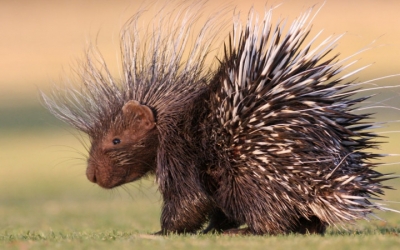
Porcupines have thousands of quills, covering a large part of their body. The main purpose of the quill is defence. Though these sharp-tipped quills normally lie flat when a porcupine is threatened, they stand erect. When attacked by a predator, the porcupine can lodge a few of them into the predators body. The quills also have another advantage. Since they are hollow, they help porcupines stay buoyant making them good swimmers Porcupines shed their quills But no worries there because the new ones are said to grow pretty rapidly. The length of quills varies by type. New World porcupines have small quills that are around 4 inches (10 cm) long, while Old World porcupines have quills that can grow up to 20 inches (51 cm) long, though there are some exceptions.
All porcupines have a few traits in common. The most obvious trait is the long, sharp quills that cover their bodies. Some quills can get up to a foot (30 centimeters) long, like those on the Africa’s crested porcupine. Porcupines use the quills as a defense. They make shake them, which makes them rattle, as a warning to potential predators. If that doesn’t work, they may charge backwards into the predator. The quills are loosely attached but cannot be thrown or projected. Some quills have scales or barbs that make them very hard to remove. Once a quill is lost, it isn’t lost forever. They grow back over time. A North American porcupine can have 30,000 or more quills.
Credit : Live Science
Picture Credit : Google




